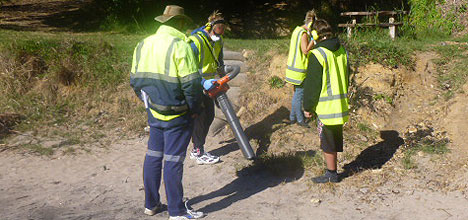Braemar Howells has developed beach vacuums to suck up the hundreds of thousands of plastic beads scattered along Western Bay of Plenty beaches from the Rena.
The method developed includes portable vacuum equipment modified for beach use and redesigned oil sieves used by Maritime New Zealand in earlier stages of the Rena clean-up.
Earlier vacuuming trials to remove plastic beads from the Rena off beaches.
'What we have now is a good way of removing beads and not natural product, such as shells, off the beach. It is an environmentally friendly way of collecting the beads,” says Braemar Howells operations manager Neil Lloyd.
Neil says using the vacuum cleaners means 80 per cent of the debris consists of beads, rather than sand and other debris.
Other systems previously trialled netted only about 20 per cent.
Bead collection continued at Tairua in the Coromandel last week, with planning underway to send teams to Matakana and Motiti Islands next week.
Most of the beads, which measure 2-3mm in diameter, are on the surface.
Investigations have found they do not sink more than 10cm into the sand, making retrieval easier.
Spring tides are expected to help concentrate the beads at the high-tide mark.
Two containers of beads washed out of the wreck during an April storm, increasing the volumes of the beads being found on beaches up the Coromandel and as far as Great Barrier Island.
The container ship Rena went aground on the Astrolabe Reef at Mount Maunganui on October 5 2011.
Since then, Braemar Howells has been working - under the instruction and support of the Rena owners - on the recovery of distressed cargo from the Rena, the ocean and beaches.



0 comments
Leave a Comment
You must be logged in to make a comment.